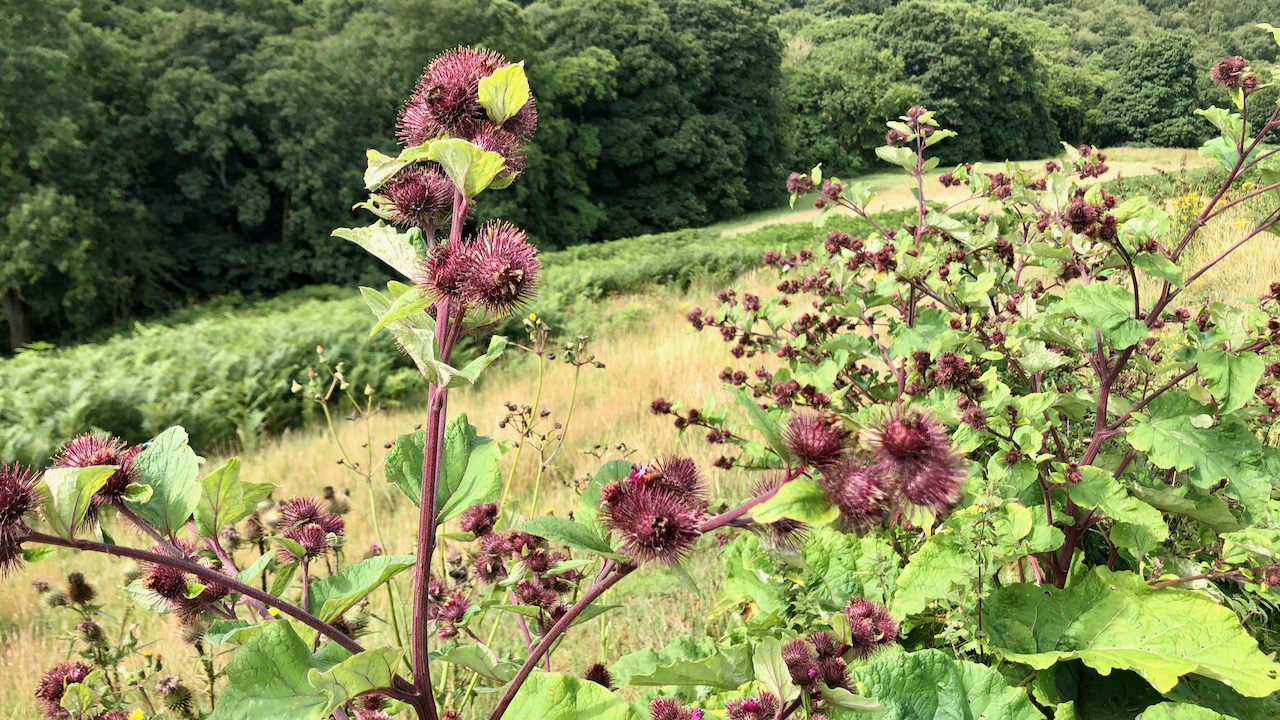Burdock, an awkward and ungainly plant, possesses the virtue of strength, standing tall with its sizeable leaves, making it a favourite subject for landscape painters, often adding depth to shady corners.
Yet, it is in our childhood memories that we recall this plant by various names: Bachelor’s buttons, Button sourees, Bcggar’s buttons, Love leaves, Sticklebacks, Sticky bobs, Sticky Jack, Sticky Willy, Cleavers, and even Velcro plant. The latter moniker, a more modern addition, attributed to the inventor of Velcro fastening, who allegedly drew inspiration from burdock’s seed-heads. Those familiar “burs” sport hooked bristles that tenaciously cling to any rough surface they encounter, including one another. Many old local names endure, a testament to the plant’s adhesive reputation, shared in part with another clinging plant called cleavers.
In our youthful games with burdock, simplicity reigned supreme. We’d hurl them at each other or stealthily stick them onto the backs of shirts and jumpers, even daring to adhere them to the fur of obliging pets. Those hooks served a purpose in hitchhiking on passing mammals, aiding the seeds in their journey.
A captivating ritual unfolds each summer in the Royal Burgh of Queensferry, Edinburgh, during the Burry Man parade. Its origins lost in the annals of time, this ceremony has been intertwined with the annual Ferry Fair since 1687, now a fixture on the second Friday of August. On this auspicious day, a man is adorned from head to ankle in burs, strolling through town, receiving gifts and greetings as he visits houses.
Beyond its whimsical associations, burdock boasts practical applications. Its sizable leaves have served as wrappers for butter and makeshift lavatory paper in outdoor settings. Its tender shoots, stripped of their outer skin, can be consumed raw, reminiscent of the taste of young new potatoes. The roots find culinary uses as well, whether roasted or stir-fried, though they are better known for their role in various ‘near-beers,’ such as the beloved fizzy drink of yesteryears, ‘Dandelion and Burdock.’ Although these days, the burdock required for such drinks comes imported in the form of hot-water extracts from the distant lands of eastern Europe.
Source: Mabey, Richard. “Flora Britannica”. Page 353. Reed International Books Ltd. 1996. ISBN 1 85619 377 2.

Leave a Reply